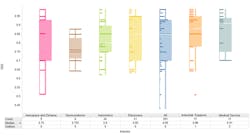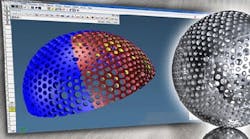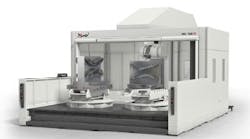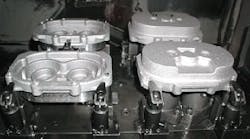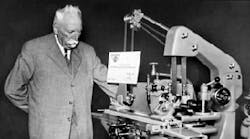Ultrahigh-speed micro machining extremely small plastic and metal medical parts offers lower force, less tool breakage, no thermal growth, better surface finishes, the elimination of de-burring and de-greasing operations and less tool vibration.
Spindle speeds between 25,000 rpm and 60,000 rpm, and the use of micro tooling, produces better part quality and improves cycle times.
However, ultrahigh-speed machining involves three interrelated elements:
- High-speed machine technology.
- Optimized tool geometries.
- And low-viscosity coolant.
The smaller the tools, the higher the spindle speeds need to be to efficiently machine quality medical parts and to avoid tool breakage. High-frequency spindles allow shops to mill, drill, thread mill and engrave at speeds to 60,000 rpm.
Besides high-rpm spindles, ultrahigh- speed machining uses smaller stepovers, but with significantly increased feedrates. The idea is to move so fast that there’s insufficient time for heat to feed back into the part and cause issues.
For ultrahigh-speed machining, shops cannot just pop a tiny tool into a 40-taper spindle on a conventional CNC machine.
That type of spindle was designed for large tools such as 3-in. fly cutters intended to hog out deep cuts in dense substrates. As such, the force and torque of such a spindle breaks small tools, which is inefficient and costly. The only option is to slow the rpm and feedrate down to a crawl, but that results in unacceptable cycle times.
Walter Schnecker, president of Datron Dynamics Inc. (www.datrondynamics.com), said when a builder designs a machine, the design can go in one of two directions: The machine can have a big motor and heavy mass to provide the force and torque to drive large tools, or it can be lighter with a high-speed, low-force spindle specifically designed for micro tooling. Certainly both types of machines can be multi-purpose and perform a variety of functions such as milling, drilling, tapping and routing, but that’s where multi-function ends.
In the end, if efficiency and quality are important to a shop and it needs to produce both large and small parts, it will end up with both types of machines working side-by-side on the same shop floor. While this seems like a duplication in terms of equipment and expenditure, Schnecker said the costs are quickly recouped through the ROI associated with efficiency and versatility. Shops will produce better parts, quicker and at a lower cost.
To help ease the transition into ultrahigh-speed machining with micro tooling, Datron offers its Excelsior Lite CNC machining center for shops that need high-speed machining capability, but are unable to afford a machine made exclusively for tooling under 0.250 in. in diameter.
The Excelsior Lite comes standard with a 1.2-kW 30,000-rpm spindle, 20 in. by 20-in. machining area, 5-tool automatic tool changer, and Windowsbased control.


